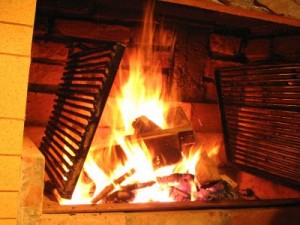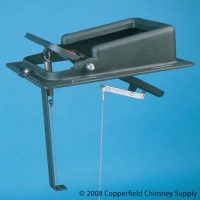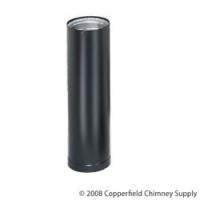
For fireplace inserts, you use a masonry chimney with a stainless steel chimney liner. The basic principle here is to direct combustion gases upward and away from the interior of the home. The chimney should extend at least 3 feet above any construction in the building and any obstruction with in 10′, it needs to extend 2 feet higher. Of course, a higher chimney is always better.
When constructing a fireplace chimney, it is important to create the best outward draft possible. The tallest, straightest chimney is best.
Fireplace Chimney Maintenance tips:
Stove installation should be checked and cleaned at least once a year. Stove pipes are subject to high temperature so it should be checked periodically for corrosion. This is especially important if you use single wall black stove pipe. Replace it immediately if corrosion level exceeds the safe zone.
Keep the damper closed when the fireplace chimney is not used to prevent the warm air from escaping. DO NOT forget to open the damper before lighting a fire. Installing a stainless steel chimney cap will extend the life of your chimney. It also prevents birds, insects, and animals to nest in your chimney. A good idea is also to apply a water repellant to the chimney. It will help prevent masonry damage and corrosion.
The quality of wood being burned will contribute to how much creosote build there will be inside of the fireplace chimney. Wet and unseasoned wood causes incomplete combustion, and cool flue wall linings can contribute to creosote build up. Creosote deposits on the interior walls of the chimney can increases the chance of a chimney fire. Creosote deposits can also ignite under certain circumstances. Make sure that the chimney liner is clean.





